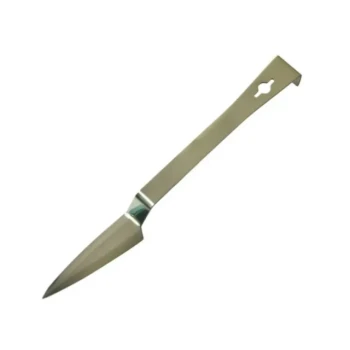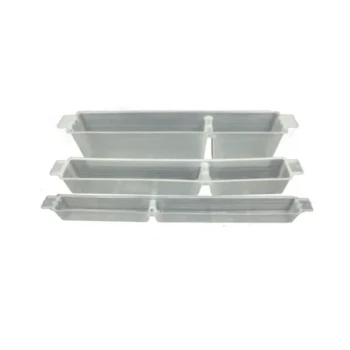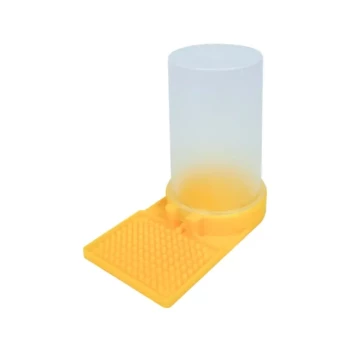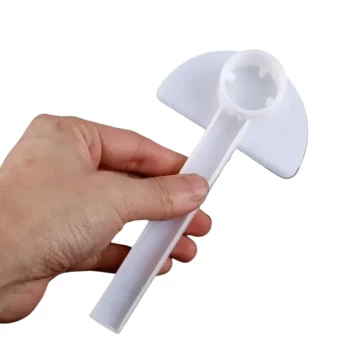In short, the beehive body is the central, modular box that houses the colony. Its fundamental purpose is to hold the vertical frames where bees build wax comb, raise their young, and store food, forming the very heart of the hive's structure and function.
While appearing as a simple box, the hive body is a sophisticated component with a dual purpose. It serves as either the nursery for the next generation of bees or the pantry for storing surplus honey, and understanding this distinction is crucial for any beekeeper.

The Foundational Role: A Home for the Colony
A beehive is a stack of specialized components, and the hive body is the most critical. It forms the main living and working quarters for the bees.
A Structure to Hold Frames
The primary mechanical function of a hive body is to provide a perfectly spaced enclosure for a set of frames. Bees build their wax comb within these frames. This organized structure allows a beekeeper to easily remove and inspect individual combs without destroying the hive.
A Controlled Environment
The wooden walls of the hive body provide essential shelter. They insulate the colony from extreme temperatures, shield them from wind and rain, and offer defense against predators, creating a stable internal environment necessary for survival.
The Two Core Functions: Brood vs. Honey
The term "hive body" is general. In practice, these boxes are used for two distinct and vital purposes, identified by their position in the hive stack.
The Brood Box: The Colony's Nursery
The bottom-most hive body (or bodies) is called the brood box or brood chamber. This is the engine of the colony. Here, the queen lays her eggs, and the colony raises its young bees, known as brood. This box also contains pollen and some honey to feed the developing bees.
The Honey Super: The Colony's Pantry
Any hive body placed above the brood box is called a honey super. The word "super" comes from the Latin for "above." Bees will naturally store surplus honey in the highest parts of the hive. By adding these boxes, the beekeeper encourages the bees to create a dedicated pantry. It is from these honey supers that honey is typically harvested.
Understanding the Trade-offs: Size and Management
Hive bodies are not one-size-fits-all. The choice of size has significant implications for both the bees and the beekeeper.
Deep vs. Medium Bodies
The two most common sizes are deep (9 5/8" tall) and medium (6 5/8" tall). Deeps offer more uninterrupted space, which queens often prefer for laying eggs. Mediums are lighter and more versatile.
The Critical Factor of Weight
This is the most significant trade-off. A full deep hive body can weigh 60-80 pounds, making it difficult for many people to lift. A full medium super is much more manageable at 35-50 pounds.
The Benefit of Standardization
Many beekeepers choose to use only one size—typically all mediums—for both brood boxes and honey supers. This simplifies management significantly, as all boxes and frames are interchangeable throughout the entire hive.
Making the Right Choice for Your Apiary
Your decision on hive body configuration should be driven by your personal goals and physical capabilities.
- If your primary focus is giving the queen a large, unbroken laying area: Use deep boxes for your brood chamber and medium or shallow boxes for your honey supers.
- If your primary focus is ease of lifting and component interchangeability: Standardize on using medium boxes for everything, including the brood chamber and honey supers.
- If your primary focus is harvesting distinct honey varietals: Use shallow supers, as bees will fill and cap these smaller boxes more quickly.
Ultimately, the hive body is the foundational building block that you will use to manage the health and productivity of your colony.
Summary Table:
| Hive Body Type | Primary Function | Key Characteristics |
|---|---|---|
| Brood Box | Nursery for raising young bees (brood) | Located at the bottom of the hive; contains eggs, larvae, pollen, and honey for the colony. |
| Honey Super | Pantry for storing surplus honey | Placed above the brood box; honey is harvested from these boxes. |
| Deep Body | Preferred for brood chambers | Heavy when full (60-80 lbs); offers large, uninterrupted space for the queen. |
| Medium Body | Versatile for brood & honey | Lighter when full (35-50 lbs); ideal for standardization and easier lifting. |
Ready to Build a Stronger Apiary?
The right hive bodies are the foundation of a thriving colony. Whether you manage a commercial apiary or are a beekeeping equipment distributor, HONESTBEE supplies the durable, high-quality beehive bodies and equipment you need to succeed.
We provide:
- Wholesale-focused operations for maximum value.
- Expertise in configurations for brood chambers and honey supers.
- Durable supplies built to support the health and productivity of your bees.
Let's discuss the best hive setup for your specific goals. Contact HONESTBEE today for wholesale pricing and expert advice!
Visual Guide
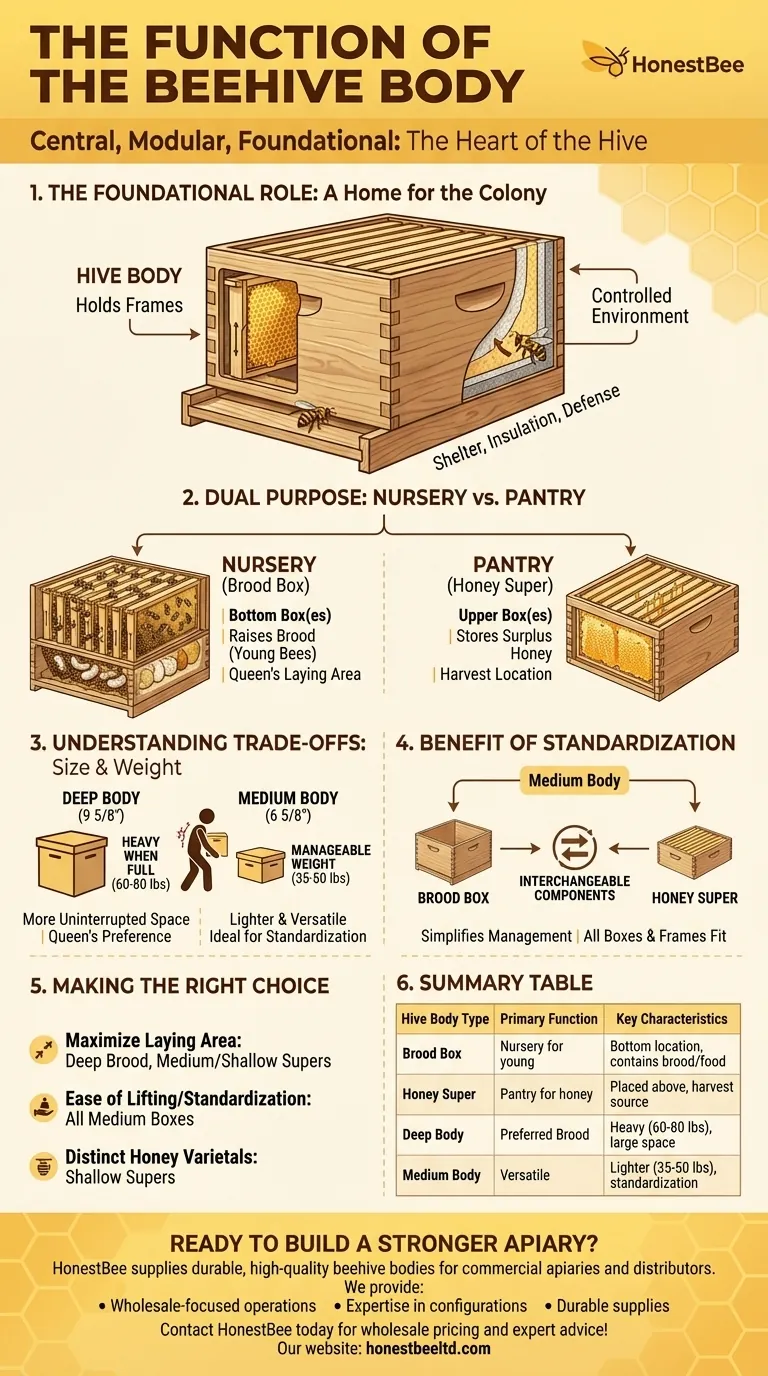
Related Products
- Langstroth Honey Bee Box Hive Boxes for Different Depths
- Australian Langstroth Beehive Boxes for Beekeeping Wholesales
- HONESTBEE Professional Long Handled Hive Tool with Precision Cutting Blade
- Professional Insulated Plastic Bee Hives
- Langstroth Bee Hives Bee Keeping Box for Beginners Beekeeping
People Also Ask
- Why do you need two bee hives? Boost Your Apiary's Success with Smart Risk Management
- What factors should beekeepers consider when choosing between wooden and polystyrene hives? Maximize Bee Health and Honey Production
- How deep is a medium bee box? Unlock the Key to a Versatile and Manageable Hive
- What are the sizes of supers available in a standard hive? A Guide to Deep, Medium, and Shallow Boxes
- How is checking honey supers in a Langstroth hive different from inspecting Honey Flow supers? A Guide to Disruptive vs. Non-Invasive Methods


